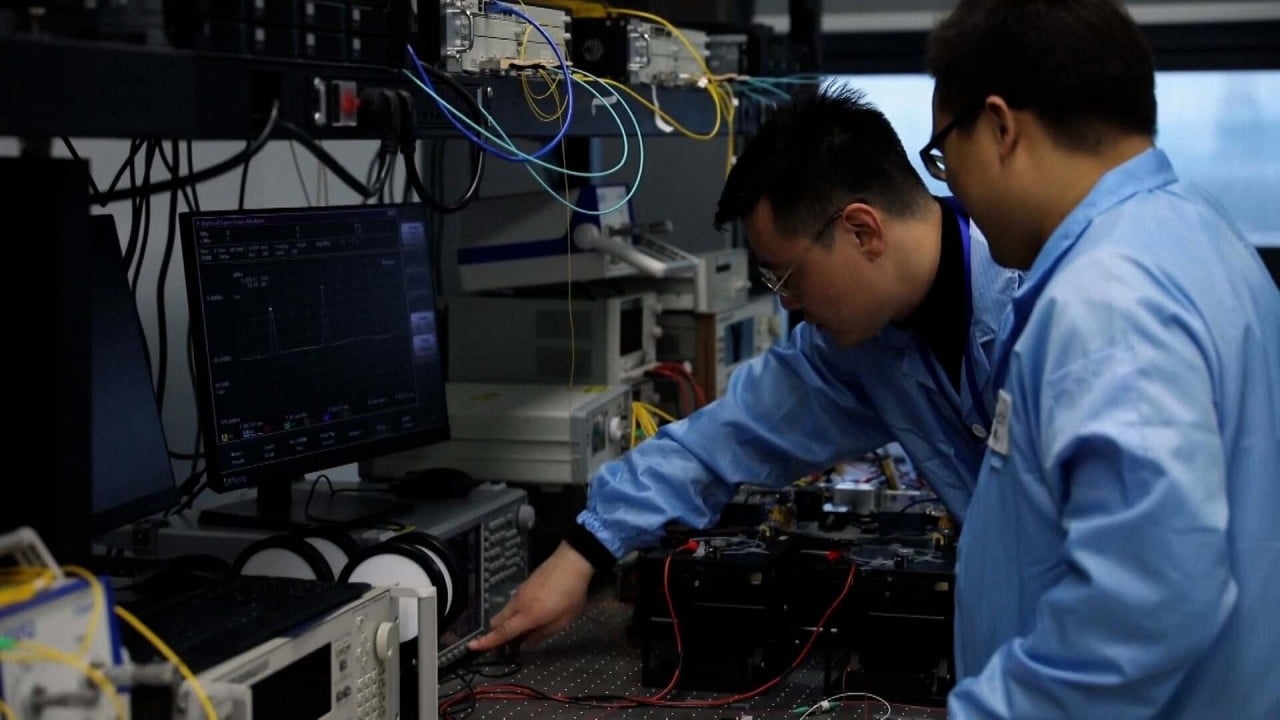In a joint statement on Monday, the nations set out their principles for 6G communication systems, including that they are developed with “trusted technology that is protective of national security”.
The statement was released by the US, Australia, Canada, the Czech Republic, Finland, France, Japan, South Korea, Sweden and the United Kingdom.
It also emphasised the creation of secure, resilient and privacy-protecting technologies that adhere to global standards.
It called for open innovation, underpinned by international collaboration, to ensure 6G is affordable, sustainable and accessible worldwide, including in developing nations.
The statement also stressed the importance of efficient spectrum use and secure supply chains to support a competitive and innovative 6G ecosystem.
Sixth-generation wireless technology, or 6G, promises to revolutionise communication with data transmission speeds up to 50 times faster than 5G.
Latency – the delay in sending and receiving information – is expected to be reduced to one-tenth of its predecessor.
And 6G is also expected to outperform 5G in peak data rates, the number of connections, mobility, spectrum efficiency and positioning capabilities.
Some experts believe 6G could bring disruptive innovations in communication, and the competition to dominate the technology is being seen among governments and tech giants worldwide, with every aspect – from setting standards to manufacturing devices – under scrutiny.
It is not yet clear when 6G will be available to the public, but most estimates point to around 2030.
Chinese scientists move step closer to satellite internet, 6G network
Chinese scientists move step closer to satellite internet, 6G network
Monday’s statement emphasised the goal of creating a secure, inclusive and sustainable 6G ecosystem, saying “collaboration and unity are essential in addressing the significant challenges we face in the development of 6G technology”.
The partners include nations that are home to telecoms powerhouses such as AT&T in the US, Nokia in Finland, Ericsson in Sweden and Samsung in South Korea. But the list notably excludes China.
A Beijing-based analyst with market research company IDC saw the move as an effort to contain China’s development of 6G, but said it may not be effective.
The analyst, speaking on condition of anonymity, noted that 6G was still at the research stage worldwide and said its trajectory would depend on how commercial practices and technological principles evolved.
Chinese scientists look to 6G to hunt submarines
Chinese scientists look to 6G to hunt submarines
A researcher from a Chinese university, who also declined to be identified, said the size of markets where the technology is being developed was also a factor. He said China had a unique advantage given its vast user base compared to countries with smaller populations like Australia.
China has made significant progress in wireless communications, quietly moving to the forefront during the 5G era. The country leads the world in the number of base stations, connected devices and owned patents, marking a big leap from its position during the 3G era and aligning its development pace with global standards by the 4G era.
The researcher said the latest move was unlikely to hinder China’s progress on developing 6G wireless communication systems, noting that tech giants such as Huawei Technologies would have independent strategies for 6G.






.jpg&h=630&w=1200&q=75&v=20170226&c=1&w=350&resize=350,250&ssl=1)














